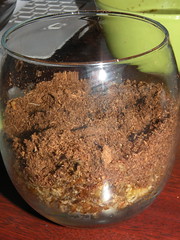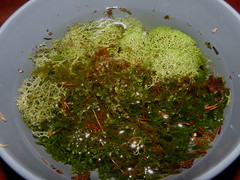 Columnist Meghan White offers a low-maintenance alternative to keeping indoor house plants.
Columnist Meghan White offers a low-maintenance alternative to keeping indoor house plants.
After four years of living in a city, I am starting to feel the effects of the lack of greenery. I’ve tried to grow plants in nearly every place I have lived since coming to Temple.
In the dorms, my roommate would constantly knock my cacti off of our windowsill. I managed to forget about a grass that promptly died of thirst while living in an apartment sophomore year. And this year I’ve managed to kill off both a succulent and a cactus shortly after replanting them. As much as I would like to blame that on the dry air in my house, I’m fairly certain that cactus should have been thriving rather than shriveling up.
I don’t have a total black thumb, though. I manage to grow plants just fine outdoors at home in the suburbs. But I have a feeling that has more to do with Mother Nature, my fondness for hardy, native plant life and possibly also my father compulsively watering everything in my absence.
I have always been fond of plants and flowers. Had I applied to Temple Ambler like initially sort of planned – sorry, Dad – I definitely would have changed my major to landscape architecture. Heck, once upon a time I even won a blue ribbon at Chester County’s flower show for flower arranging, albeit dry flower arranging, and since it was in elementary school my competition wasn’t exactly the best.
Maybe it’s just because I was raised in a home with a lot of gardens, or maybe it was my frequent trips to Longwood Gardens when I was younger, but plants always make anywhere feel more like home.
And let’s be serious here, terrariums are all the rage. They can be found nearly everywhere on the Internet. From DIY blogs to sites like Pinterest, it seems like you may actually need a terrarium to qualify as cool. While I rarely jump on trend bandwagons, this is one trend that is too cute to pass up.
During break I managed to convince my father to take me to the Philadelphia International Flower Show. Despite the fact that I have a track record of killing everything I try to grow in pots, I bought a moss terrarium kit complete with a miniature figurine.
It is the first kit that I’ve used for anything in awhile, but I figured it would be the best option for my first attempt at making a moss terrarium. The added convenience of having to purchase only one thing separate from the kit – a spray bottle –made it well worth the cost.
Still, the steps of creating a moss terrarium are extremely easy to replicate, and I plan on making my own completely DIY version of the terrarium soon. The supplies may take a bit of hunting for in the city, but having your own little work in a jar may be worth the search.
Supplies
– glass container with lid
– rocks–have some extra for decoration
– dried moss
– soil
– fresh moss
– spray bottle with water
– dishes to soak moss
– figurine – this is optional but can really some fun add to a terrarium
– long tweezers or small wooden dowel – this is only necessary if the glass container has a narrow neck
Steps
1. Put about an inch of rocks into the bottom of the glass container. This provides drainage in your terrarium.
2. Soak dried moss in water for a minute so it is pliable, squeeze out excess water and place on top of rocks. Pat down, and make sure that the rocks are covered. This will help to prevent soil from falling through. Depending on the size of the glass container, you may need to use the dowel to help arrange the dried moss.
3. Add a thin layer of soil. If the container is large enough in diameter, you can sculpt some peaks and valleys in there if that’s your style. Mist lightly with the spray bottle.
4. If using a kit, you will have to have soaked your live moss for a few hours to rejuvenate it. If you’re using live moss just add it to your terrarium and arrange it in any way. Use different kinds of moss if you would like to get creative.
5. Add any decorations that you would like. My kit came with a small woman figurine, and the directions suggested using a few rocks from the base for additional décor. Any small trinket that won’t rust or get moldy can be used for decoration. You can even make your own.
Terrarium care
1. Mist your terrarium before placing in indirect or filtered sunlight. Make sure you replace the lid. Too much direct light will likely fry your moss. Artificial light can also be beneficial to moss.
2. Give your terrarium a few squirts from the spray bottle every two to four weeks. Be careful not to drown your moss, but don’t let it get too dry either. Basically, keep a watchful eye on it and don’t forget it exists until it has turned completely brown.
Meghan White can be reached at meghan.white@temple.edu.







Be the first to comment